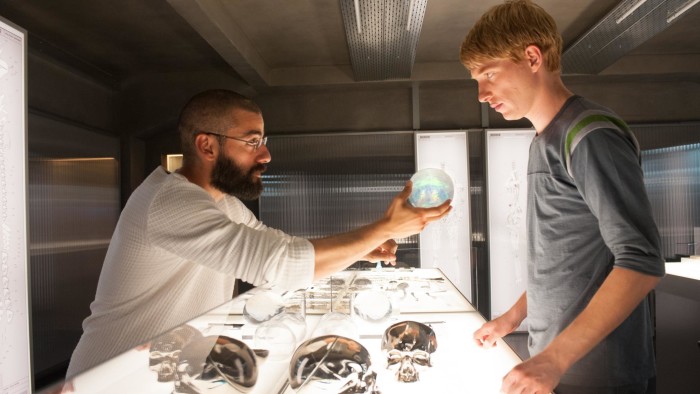Ex Machina — film review

Roula Khalaf, Editor of the FT, selects her favourite stories in this weekly newsletter.
Here’s a thought for the new year. Is Ex Machina the first feature film ever made by androids? A fancy; but a nearly plausible one. Look at the personnel roll. For director a reclusive author-screenwriter many have never set eyes on, at least till lately, Alex The Beach Garland. For female lead a Swede, Alicia Vikander, who last week spoke eerily faultless English (Testament of Youth), this week eerily faultless American. For males, Domhnall Gleeson, surreally non-alike scion of Irish actor Brendan — slim and pale to his bluff and full-blooded — and Oscar Isaac.
Isaac is the most fascinating of all: a rising star who has twice opened two films simultaneously. Last time, In Secret and The Two Faces of January: Zola lover and Highsmith assassin. This time his Manhattan Macbeth in A Most Violent Year near-collides with his scheming, volatile, cabin-fevered cyborg scientist. Are there two Isaacs? Are they actor-bots?
Easy to believe, since Ex Machina is smart, swanky, a little inhuman and preternaturally well crafted. Garland debut-directs as smoothly as a supercomputer. The young tech-firm nerd (Gleeson) who believes he has “won” a week with his CEO is choppered to the CEO’s estate. The gleaming mountains look Scottish, are Norwegian and play the Rockies. (Even the settings in this tale of myriad designer misdirection are multiple-choice.) Here Isaac’s tycoon steers him into a “Turing test”. Gleeson will interact for seven days, under observation, with a new android (Vikander). Object: to determine if she has artificial intelligence, that holy grail of robot creation.
The movie goes dapperly, teasingly mad from there. (Each twist being a spoiler, I seal my lips over details.) Isaac plays his scientist mesmerisingly: a headstrong hunk with jagged body language, alternating spurts of charm and hostility, and eyes that can slide sly, killer stares. You believe this man is close to insane, albeit with a godlike insanity. Gleeson and Vikander hold their rapt interviews like strange, otherworldly tea ceremonies. At times, visually, they seem lost in a Klimt or Delvaux painting. Few better ways to be lost. It’s only at moments when the film and its themes threaten to “find themselves” — we’ve surely been there, done that, got the HAL T-shirt, regarding the dangers of machine intelligence — that Garland’s own art mislays its way.

Comments